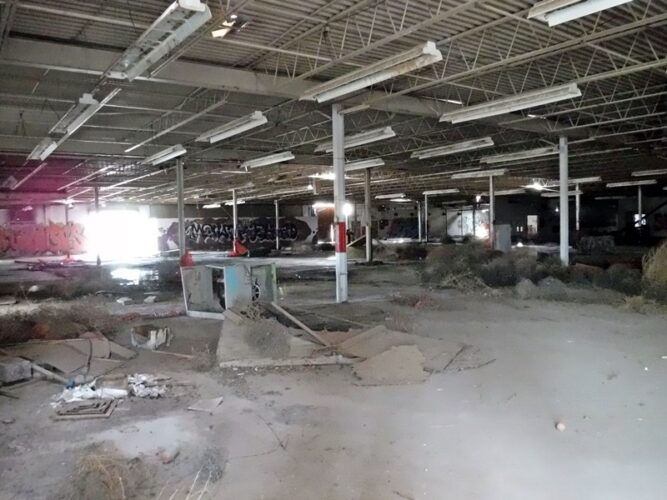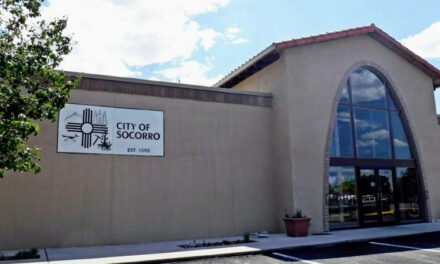The next phase of the Eagle Picher superfund site cleanup is set to begin in earnest this month, according to representatives from the EPA and New Mexico Environmental Department who facilitated last week’s meeting of the Eagle Picher Community Advisory Group at Socorro City Hall.
The soil removal will be conducted directly under NMED management in consultation with and under the oversight of the EPA and is scheduled to begin within two or three weeks. But first, a preparatory site inspection must be conducted this week.
CAG co-chair Vicki Kelsey expressed relief at the announcement.
“This is what we’ve been waiting for,” Kelsey said. “It’s been dragging on for years, and now we hear they are going to start the work in August.”

Interior of toxic Eagle Picher building.
Chieftain file photo
Site investigations have identified four areas of lead-impacted soils above the lead cleanup goal of 800 milligrams per kilogram. The four areas correspond to Eagle Picher’s locations of its battery plate stockpile, a material processing space, a wastewater impoundment, and an isolated area with lead-contaminated soil. Soils from these four areas total approximately 1,100 cubic yards and will be removed.
Along with removing and remediating the surface soil, the other major concerns are the contamination of the buildings at the site and the underground plume.
Demolished and abating in-place asbestos-containing building material and lead-based paint from structures at the site will also be removed. Debris will be transported to EPA-approved landfills in Mountainair and Albuquerque. In addition, any lead battery plates remaining on the property will be collected and transported to a recycling facility.
The officials say the long-awaited groundwater remediation is expected to begin early next year. The groundwater remedy involves the installation of extraction wells throughout the length of the plume, transporting the extracted groundwater through underground piping to a central treatment building, and treatment of the groundwater through advanced oxidation process technology.
When the pumping begins, the treatment goal is 280 gallons per minute, and discharge will be evaluated at steps along the way.
This technology uses ozone and hydrogen peroxide to destroy volatile organic compounds.
In February 2020, the EPA tested for vapor intrusion in nearby homes due to groundwater contamination from the site. The testing showed less than 1 in 100,000 parts, which translates that constant contact with the toxic water eight hours a day for 25 years could result in cancer.
One homeowner at the meeting asked if their residence needed to be re-tested since switching from a swamp cooler to air conditioning.
EPA’s Lauren Harris said they “certainly could, but there was little reason to think it will change.”
Also at the meeting, Eric Marsh of SKEO, the contractor from EPA’s Technical Assistance Services for Communities program, reviewed the Technical Assistance Needs Assessment report. His presentation identified information needs and concerns raised during previous interviews with community members, and he offered potential options to help the public better understand technical information throughout the cleanup process.
The Eagle Picher Community Advisory Group, in cooperation with the EPA and NMED, holds meetings on the second Thursday of each month to update the public on the cleanup progress and to hear community concerns.
On Aug. 1, City of Socorro Mayor Ravi Bhasker reported to the city council about the meeting with the EPA, and that development of Newberry Pond as a recreation site is a possibility, and if so, the city is interested in buying the property.
Jay Ann Cox contributed to this story.


















